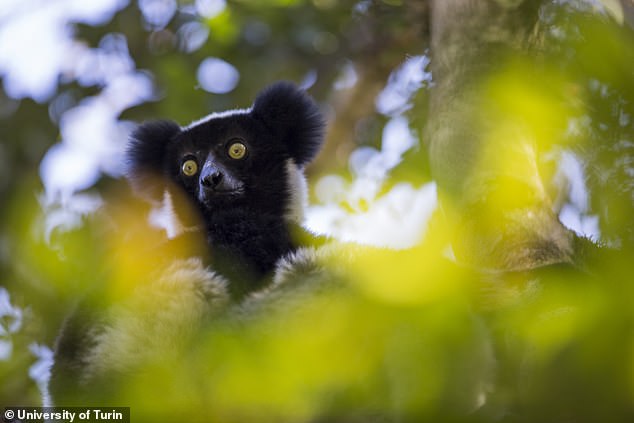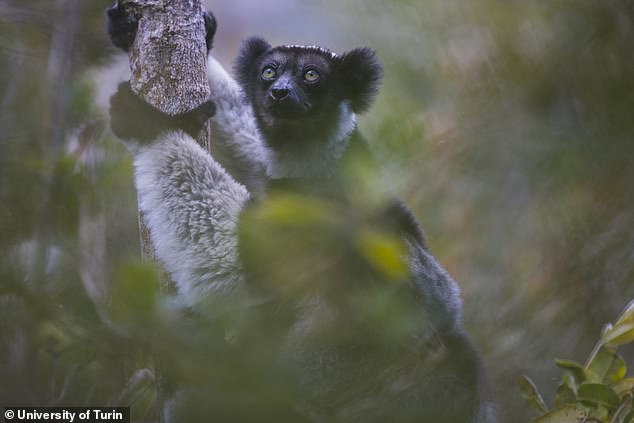Lemurs in the wild serenade each other with a distinct rhythm, research shows – suggesting the ability to sing evolved early in primates
- Researchers claim that the rhythmic sounds of lemurs may be the origin of human music
- Indris lemurs in Madagascar use complex rhythmic calls to communicate
They sang the famous ‘I like to move it, move it’ in the hit film Madagascar.
Now it turns out that rhythmic lemurs can actually shed light on our own love for music.
Analysis of groups of singing lemurs could reveal how humans evolved to create melodies, a new study says.
Indris, known as ‘singing lemurs’, live in small family groups in the rainforest of Madagascar and communicate using songs – similar to birds and humans.
They also use rhythmic vocalizations, such as alarm calls, to warn family members of predators.
Researchers say the musical call of the ‘singing lemurs’ of the Indris (pictured) of Madagascar could reveal how humans evolved the ability to make music

King Julian may have made the lemurs famous for their love of dancing in the Dreamworks-produced Madagascar films (pictured), but these Malagasy lemurs prefer singing to dancing
Researchers from the University of Warwick found that Indris have ‘isochrony’ in their communication, where the time between sounds or notes is the same, resulting in a consistent rhythm or beat, just like in music.
For example, in an isochronous pattern, each note or beat would be evenly spaced, like the ticking of a clock.
For the study, the team recorded both Indris songs and alarm calls in several forest areas in Madagascar, tracking the free-ranging animals from 2005 to 2020.
Lead author Dr Chiara De Gregorio said: ‘By isolating the notes and intervals between notes in 820 songs from 51 lemurs, we calculated the rhythmic ratios for each pair of consecutive intervals.’
Analysis revealed that isochrony is present in all songs and alarm calls, making this a fundamental aspect of indri communication.

Researchers found that Indris’ calls contained consistently spaced notes in rhythms that sounded a lot like music

This suggests that elements of human musical abilities may have evolved very early in our primate lineage, as far back as New World monkeys such as lemurs.
‘This discovery positions indris as animals with the highest number of vocal rhythms shared with the human musical repertoire – surpassing songbirds and other mammals,’ added Dr De Gregorio.
These results suggest that elements of human musical traits evolved early in the primate lineage, the team said.
Given that alarm calls likely existed before more complex vocalizations such as songs, isochrony could be an ancestral rhythm from which other rhythmic patterns evolved.
Co-author Dr. Daria Valente from the University of Turin said: ‘The findings highlight the evolutionary roots of musical rhythm and show that the fundamental elements of human music can be traced back to the early communication systems of primates.’
The findings were published in Annals of the New York Academy of Sciences.
